#Interior Design Guide
Explore tagged Tumblr posts
Text
How to Select Curtains for Your Residential Interior Space
First all, why would you need curtains? You need Interior curtains to control natural light, create privacy, and add aesthetic appeal to any room. In other words, curtains are used for enhancing overall interior color scheme and style. They can also serve as insulation which helps regulate room temperature and reduce noise, making spaces more comfortable and energy-efficient. Step-by-Step Guide…
#Bederoom Design#Form and Function#Home Design#Interior Design Guide#Living Room#Living room Design#Residential Fit Out#Residential Interior Design
0 notes
Text
Fantasy Guide to Interiors
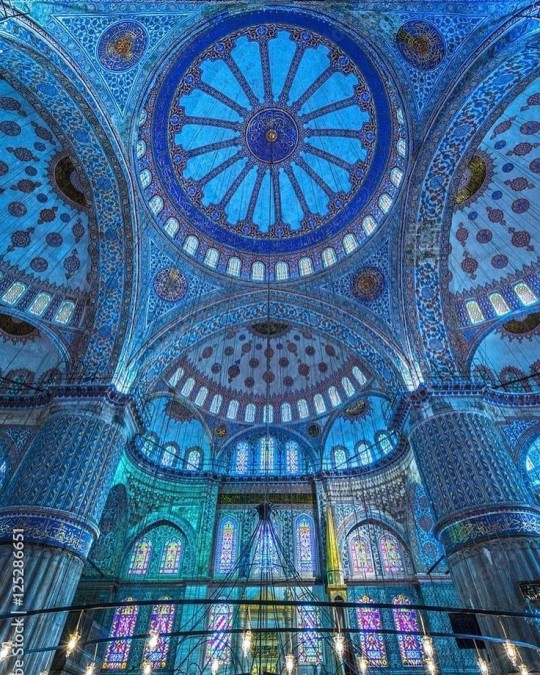
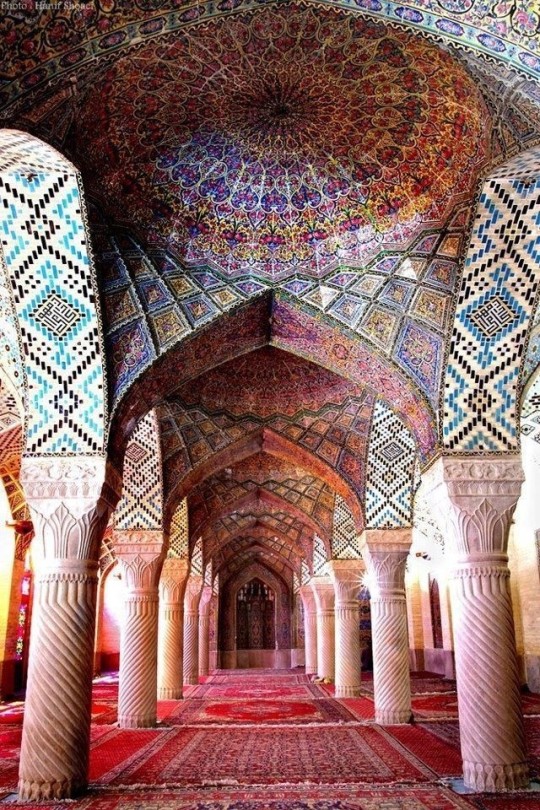
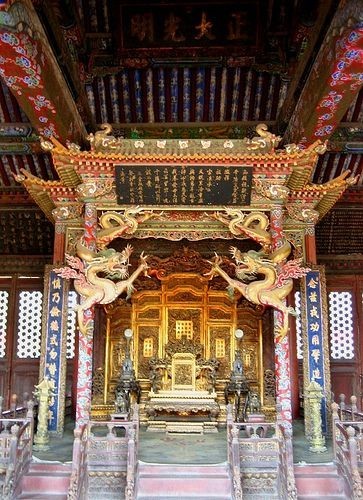
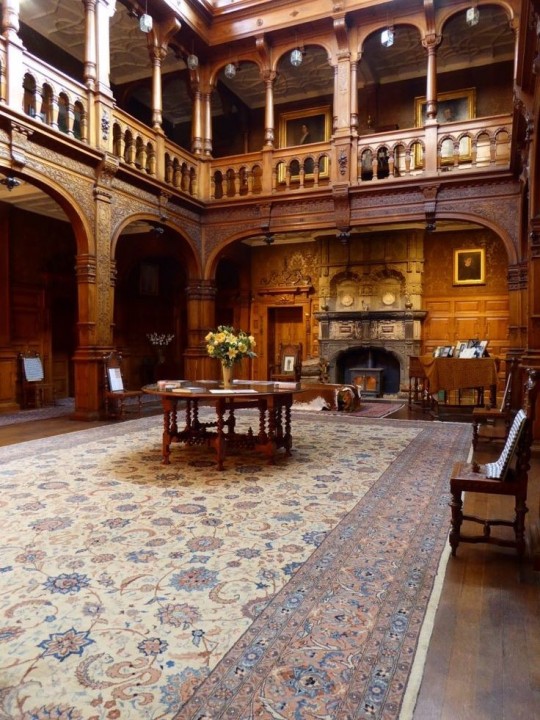
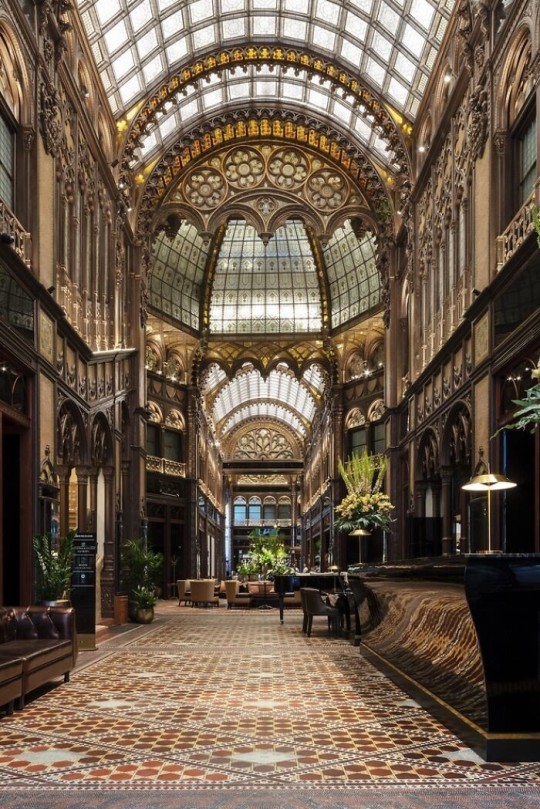
As a followup to the very popular post on architecture, I decided to add onto it by exploring the interior of each movement and the different design techniques and tastes of each era. This post at be helpful for historical fiction, fantasy or just a long read when you're bored.
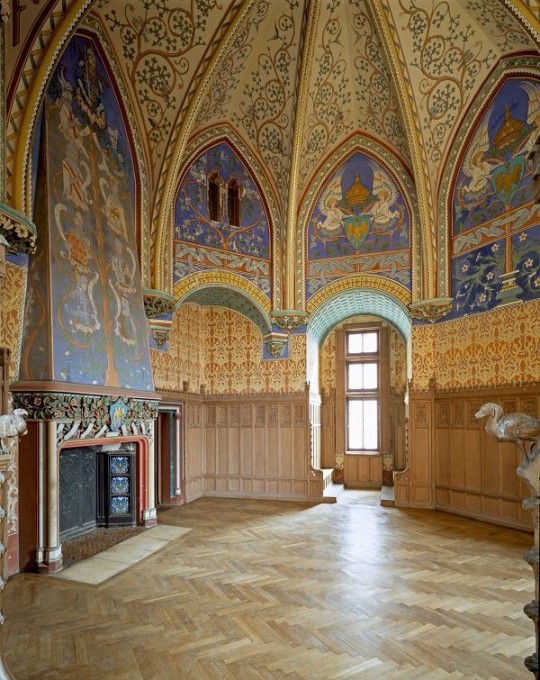
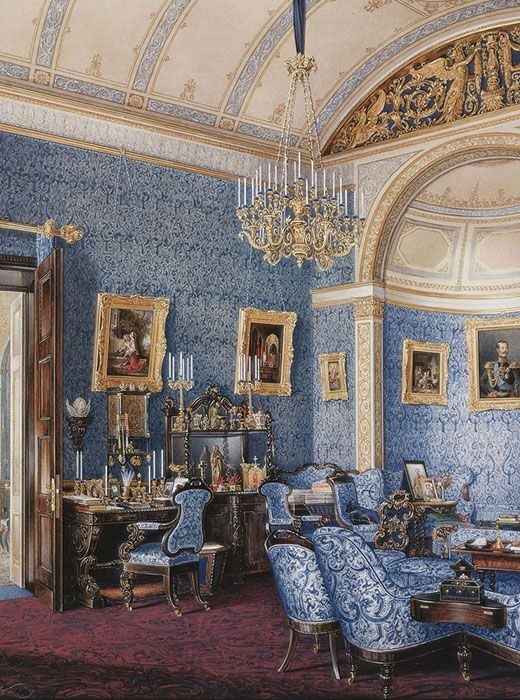
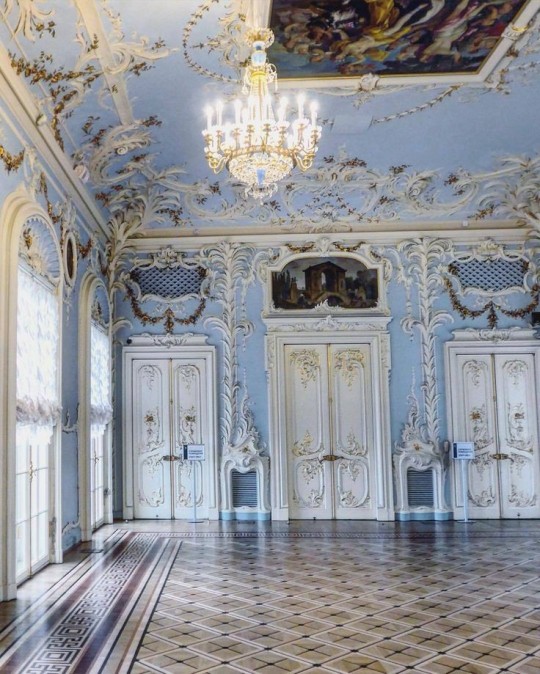
Interior Design Terms
Reeding and fluting: Fluting is a technique that consists a continuous pattern of concave grooves in a flat surface across a surface. Reeding is it's opposite.
Embossing: stamping, carving or moulding a symbol to make it stand out on a surface.
Paneling: Panels of carved wood or fabric a fixed to a wall in a continuous pattern.
Gilding: the use of gold to highlight features.
Glazed Tile: Ceramic or porcelain tiles coated with liquid coloured glass or enamel.
Column: A column is a pillar of stone or wood built to support a ceiling. We will see more of columns later on.
Bay Window: The Bay Window is a window projecting outward from a building.
Frescos: A design element of painting images upon wet plaster.
Mosaic: Mosaics are a design element that involves using pieces of coloured glass and fitted them together upon the floor or wall to form images.
Mouldings: ornate strips of carved wood along the top of a wall.
Wainscoting: paneling along the lower portion of a wall.
Chinoiserie: A European take on East Asian art. Usually seen in wallpaper.
Clerestory: A series of eye-level windows.
Sconces: A light fixture supported on a wall.
Niche: A sunken area within a wall.
Monochromatic: Focusing on a single colour within a scheme.
Ceiling rose: A moulding fashioned on the ceiling in the shape of a rose usually supporting a light fixture.
Baluster: the vertical bars of a railing.
Façade: front portion of a building
Lintel: Top of a door or window.
Portico: a covered structure over a door supported by columns
Eaves: the part of the roof overhanging from the building
Skirting: border around lower length of a wall
Ancient Greece
Houses were made of either sun-dried clay bricks or stone which were painted when they dried. Ground floors were decorated with coloured stones and tiles called Mosaics. Upper level floors were made from wood. Homes were furnished with tapestries and furniture, and in grand homes statues and grand altars would be found. Furniture was very skillfully crafted in Ancient Greece, much attention was paid to the carving and decoration of such things. Of course, Ancient Greece is ancient so I won't be going through all the movements but I will talk a little about columns.
Doric: Doric is the oldest of the orders and some argue it is the simplest. The columns of this style are set close together, without bases and carved with concave curves called flutes. The capitals (the top of the column) are plain often built with a curve at the base called an echinus and are topped by a square at the apex called an abacus. The entablature is marked by frieze of vertical channels/triglyphs. In between the channels would be detail of carved marble. The Parthenon in Athens is your best example of Doric architecture.
Ionic: The Ionic style was used for smaller buildings and the interiors. The columns had twin volutes, scroll-like designs on its capital. Between these scrolls, there was a carved curve known as an egg and in this style the entablature is much narrower and the frieze is thick with carvings. The example of Ionic Architecture is the Temple to Athena Nike at the Athens Acropolis.
Corinthian: The Corinthian style has some similarities with the Ionic order, the bases, entablature and columns almost the same but the capital is more ornate its base, column, and entablature, but its capital is far more ornate, commonly carved with depictions of acanthus leaves. The style was more slender than the others on this list, used less for bearing weight but more for decoration. Corinthian style can be found along the top levels of the Colosseum in Rome.
Tuscan: The Tuscan order shares much with the Doric order, but the columns are un-fluted and smooth. The entablature is far simpler, formed without triglyphs or guttae. The columns are capped with round capitals.
Composite: This style is mixed. It features the volutes of the Ionic order and the capitals of the Corinthian order. The volutes are larger in these columns and often more ornate. The column's capital is rather plain. for the capital, with no consistent differences to that above or below the capital.
Ancient Rome
Rome is well known for its outward architectural styles. However the Romans did know how to add that rizz to the interior. Ceilings were either vaulted or made from exploded beams that could be painted. The Romans were big into design. Moasics were a common interior sight, the use of little pieces of coloured glass or stone to create a larger image. Frescoes were used to add colour to the home, depicting mythical figures and beasts and also different textures such as stonework or brick. The Romans loved their furniture. Dining tables were low and the Romans ate on couches. Weaving was a popular pastime so there would be tapestries and wall hangings in the house. Rich households could even afford to import fine rugs from across the Empire. Glass was also a feature in Roman interior but windows were usually not paned as large panes were hard to make. Doors were usually treated with panels that were carved or in lain with bronze.
Ancient Egypt
Egypt was one of the first great civilisations, known for its immense and grand structures. Wealthy Egyptians had grand homes. The walls were painted or plastered usually with bright colours and hues. The Egyptians are cool because they mapped out their buildings in such a way to adhere to astrological movements meaning on special days if the calendar the temple or monuments were in the right place always. The columns of Egyptian where thicker, more bulbous and often had capitals shaped like bundles of papyrus reeds. Woven mats and tapestries were popular decor. Motifs from the river such as palms, papyrus and reeds were popular symbols used.
Ancient Africa
African Architecture is a very mixed bag and more structurally different and impressive than Hollywood would have you believe. Far beyond the common depictions of primitive buildings, the African nations were among the giants of their time in architecture, no style quite the same as the last but just as breathtaking.
Rwandan Architecture: The Rwandans commonly built of hardened clay with thatched roofs of dried grass or reeds. Mats of woven reeds carpeted the floors of royal abodes. These residences folded about a large public area known as a karubanda and were often so large that they became almost like a maze, connecting different chambers/huts of all kinds of uses be they residential or for other purposes.
Ashanti Architecture: The Ashanti style can be found in present day Ghana. The style incorporates walls of plaster formed of mud and designed with bright paint and buildings with a courtyard at the heart, not unlike another examples on this post. The Ashanti also formed their buildings of the favourite method of wattle and daub.
Nubian Architecture: Nubia, in modern day Ethiopia, was home to the Nubians who were one of the world's most impressive architects at the beginning of the architecture world and probably would be more talked about if it weren't for the Egyptians building monuments only up the road. The Nubians were famous for building the speos, tall tower-like spires carved of stone. The Nubians used a variety of materials and skills to build, for example wattle and daub and mudbrick. The Kingdom of Kush, the people who took over the Nubian Empire was a fan of Egyptian works even if they didn't like them very much. The Kushites began building pyramid-like structures such at the sight of Gebel Barkal
Japanese Interiors
Japenese interior design rests upon 7 principles. Kanso (簡素)- Simplicity, Fukinsei (不均整)- Asymmetry, Shizen (自然)- Natural, Shibumi (渋味) – Simple beauty, Yugen (幽玄)- subtle grace, Datsuzoku (脱俗) – freedom from habitual behaviour, Seijaku (静寂)- tranquillity.
Common features of Japanese Interior Design:
Shoji walls: these are the screens you think of when you think of the traditional Japanese homes. They are made of wooden frames, rice paper and used to partition
Tatami: Tatami mats are used within Japanese households to blanket the floors. They were made of rice straw and rush straw, laid down to cushion the floor.
Genkan: The Genkan was a sunken space between the front door and the rest of the house. This area is meant to separate the home from the outside and is where shoes are discarded before entering.
Japanese furniture: often lowest, close to the ground. These include tables and chairs but often tanked are replaced by zabuton, large cushions. Furniture is usually carved of wood in a minimalist design.
Nature: As both the Shinto and Buddhist beliefs are great influences upon architecture, there is a strong presence of nature with the architecture. Wood is used for this reason and natural light is prevalent with in the home. The orientation is meant to reflect the best view of the world.
Islamic World Interior
The Islamic world has one of the most beautiful and impressive interior design styles across the world. Colour and detail are absolute staples in the movement. Windows are usually not paned with glass but covered in ornate lattices known as jali. The jali give ventilation, light and privacy to the home. Islamic Interiors are ornate and colourful, using coloured ceramic tiles. The upper parts of walls and ceilings are usually flat decorated with arabesques (foliate ornamentation), while the lower wall areas were usually tiled. Features such as honeycombed ceilings, horseshoe arches, stalactite-fringed arches and stalactite vaults (Muqarnas) are prevalent among many famous Islamic buildings such as the Alhambra and the Blue Mosque.
Byzantine (330/395–1453 A. D)
The Byzantine Empire or Eastern Roman Empire was where eat met west, leading to a melting pot of different interior designs based on early Christian styles and Persian influences. Mosaics are probably what you think of when you think of the Byzantine Empire. Ivory was also a popular feature in the Interiors, with carved ivory or the use of it in inlay. The use of gold as a decorative feature usually by way of repoussé (decorating metals by hammering in the design from the backside of the metal). Fabrics from Persia, heavily embroidered and intricately woven along with silks from afar a field as China, would also be used to upholster furniture or be used as wall hangings. The Byzantines favoured natural light, usually from the use of copolas.
Indian Interiors
India is of course, the font of all intricate designs. India's history is sectioned into many eras but we will focus on a few to give you an idea of prevalent techniques and tastes.
The Gupta Empire (320 – 650 CE): The Gupta era was a time of stone carving. As impressive as the outside of these buildings are, the Interiors are just as amazing. Gupta era buildings featured many details such as ogee (circular or horseshoe arch), gavaksha/chandrashala (the motif centred these arches), ashlar masonry (built of squared stone blocks) with ceilings of plain, flat slabs of stone.
Delhi Sultanate (1206–1526): Another period of beautifully carved stone. The Delhi sultanate had influence from the Islamic world, with heavy uses of mosaics, brackets, intricate mouldings, columns and and hypostyle halls.
Mughal Empire (1526–1857): Stonework was also important on the Mughal Empire. Intricately carved stonework was seen in the pillars, low relief panels depicting nature images and jalis (marble screens). Stonework was also decorated in a stye known as pietra dura/parchin kari with inscriptions and geometric designs using colored stones to create images. Tilework was also popular during this period. Moasic tiles were cut and fitted together to create larger patters while cuerda seca tiles were coloured tiles outlined with black.
Chinese Interiors
Common features of Chinese Interiors
Use of Colours: Colour in Chinese Interior is usually vibrant and bold. Red and Black are are traditional colours, meant to bring luck, happiness, power, knowledge and stability to the household.
Latticework: Lattices are a staple in Chinese interiors most often seen on shutters, screens, doors of cabinets snf even traditional beds.
Lacquer: Multiple coats of lacquer are applied to furniture or cabinets (now walls) and then carved. The skill is called Diaoqi (雕漆).
Decorative Screens: Screens are used to partition off part of a room. They are usually of carved wood, pained with very intricate murals.
Shrines: Spaces were reserved on the home to honour ancestors, usually consisting of an altar where offerings could be made.
Of course, Chinese Interiors are not all the same through the different eras. While some details and techniques were interchangeable through different dynasties, usually a dynasty had a notable style or deviation. These aren't all the dynasties of course but a few interesting examples.
Song Dynasty (960–1279): The Song Dynasty is known for its stonework. Sculpture was an important part of Song Dynasty interior. It was in this period than brick and stone work became the most used material. The Song Dynasty was also known for its very intricate attention to detail, paintings, and used tiles.
Ming Dynasty(1368–1644): Ceilings were adorned with cloisons usually featuring yellow reed work. The floors would be of flagstones usually of deep tones, mostly black. The Ming Dynasty favoured richly coloured silk hangings, tapestries and furnishings. Furniture was usually carved of darker woods, arrayed in a certain way to bring peace to the dwelling.
Han Dynasty (206 BC-220 AD): Interior walls were plastered and painted to show important figures and scenes. Lacquer, though it was discovered earlier, came into greater prominence with better skill in this era.
Tang Dynasty (618–907) : The colour palette is restrained, reserved. But the Tang dynasty is not without it's beauty. Earthenware reached it's peak in this era, many homes would display fine examples as well. The Tang dynasty is famous for its upturned eaves, the ceilings supported by timber columns mounted with metal or stone bases. Glazed tiles were popular in this era, either a fixed to the roof or decorating a screen wall.
Romanesque (6th -11th century/12th)
Romanesque Architecture is a span between the end of Roman Empire to the Gothic style. Taking inspiration from the Roman and Byzantine Empires, the Romanesque period incorporates many of the styles. The most common details are carved floral and foliage symbols with the stonework of the Romanesque buildings. Cable mouldings or twisted rope-like carvings would have framed doorways. As per the name, Romansque Interiors relied heavily on its love and admiration for Rome. The Romanesque style uses geometric shapes as statements using curves, circles snf arches. The colours would be clean and warm, focusing on minimal ornamentation.
Gothic Architecture (12th Century - 16th Century)
The Gothic style is what you think of when you think of old European cathedrals and probably one of the beautiful of the styles on this list and one of most recognisable. The Gothic style is a dramatic, opposing sight and one of the easiest to describe. Decoration in this era became more ornate, stonework began to sport carving and modelling in a way it did not before. The ceilings moved away from barreled vaults to quadripartite and sexpartite vaulting. Columns slimmed as other supportive structures were invented. Intricate stained glass windows began their popularity here. In Gothic structures, everything is very symmetrical and even.
Mediaeval (500 AD to 1500)
Interiors of mediaeval homes are not quite as drab as Hollywood likes to make out. Building materials may be hidden by plaster in rich homes, sometimes even painted. Floors were either dirt strewn with rushes or flagstones in larger homes. Stonework was popular, especially around fireplaces. Grand homes would be decorated with intricate woodwork, carved heraldic beasts and wall hangings of fine fabrics.
Renaissance (late 1300s-1600s)
The Renaissance was a period of great artistry and splendor. The revival of old styles injected symmetry and colour into the homes. Frescoes were back. Painted mouldings adorned the ceilings and walls. Furniture became more ornate, fixed with luxurious upholstery and fine carvings. Caryatids (pillars in the shape of women), grotesques, Roman and Greek images were used to spruce up the place. Floors began to become more intricate, with coloured stone and marble. Modelled stucco, sgraffiti arabesques (made by cutting lines through a layer of plaster or stucco to reveal an underlayer), and fine wall painting were used in brilliant combinations in the early part of the 16th century.
Tudor Interior (1485-1603)
The Tudor period is a starkly unique style within England and very recognisable. Windows were fixed with lattice work, usually casement. Stained glass was also in in this period, usually depicting figures and heraldic beasts. Rooms would be panelled with wood or plastered. Walls would be adorned with tapestries or embroidered hangings. Windows and furniture would be furnished with fine fabrics such as brocade. Floors would typically be of wood, sometimes strewn with rush matting mixed with fresh herbs and flowers to freshen the room.
Baroque (1600 to 1750)
The Baroque period was a time for splendor and for splashing the cash. The interior of a baroque room was usually intricate, usually of a light palette, featuring a very high ceiling heavy with detail. Furniture would choke the room, ornately carved and stitched with very high quality fabrics. The rooms would be full of art not limited to just paintings but also sculptures of marble or bronze, large intricate mirrors, moldings along the walls which may be heavily gilded, chandeliers and detailed paneling.
Victorian (1837-1901)
We think of the interiors of Victorian homes as dowdy and dark but that isn't true. The Victorians favoured tapestries, intricate rugs, decorated wallpaper, exquisitely furniture, and surprisingly, bright colour. Dyes were more widely available to people of all stations and the Victorians did not want for colour. Patterns and details were usually nature inspired, usually floral or vines. Walls could also be painted to mimic a building material such as wood or marble and most likely painted in rich tones. The Victorians were suckers for furniture, preferring them grandly carved with fine fabric usually embroidered or buttoned. And they did not believe in minimalism. If you could fit another piece of furniture in a room, it was going in there. Floors were almost eclusively wood laid with the previously mentioned rugs. But the Victorians did enjoy tiled floors but restricted them to entrances. The Victorians were quite in touch with their green thumbs so expect a lot of flowers and greenery inside. with various elaborately decorated patterned rugs. And remember, the Victorians loved to display as much wealth as they could. Every shelf, cabinet, case and ledge would be chocked full of ornaments and antiques.
Edwardian/The Gilded Age/Belle Epoque (1880s-1914)
This period (I've lumped them together for simplicity) began to move away from the deep tones and ornate patterns of the Victorian period. Colour became more neutral. Nature still had a place in design. Stained glass began to become popular, especially on lampshades and light fixtures. Embossing started to gain popularity and tile work began to expand from the entrance halls to other parts of the house. Furniture began to move away from dark wood, some families favouring breathable woods like wicker. The rooms would be less cluttered.
Art Deco (1920s-1930s)
The 1920s was a time of buzz and change. Gone were the refined tastes of the pre-war era and now the wow factor was in. Walls were smoother, buildings were sharper and more jagged, doorways and windows were decorated with reeding and fluting. Pastels were in, as was the heavy use of black and white, along with gold. Mirrors and glass were in, injecting light into rooms. Gold, silver, steel and chrome were used in furnishings and decor. Geometric shapes were a favourite design choice. Again, high quality and bold fabrics were used such as animal skins or colourful velvet. It was all a rejection of the Art Noveau movement, away from nature focusing on the man made.
Modernism (1930 - 1965)
Modernism came after the Art Deco movement. Fuss and feathers were out the door and now, practicality was in. Materials used are shown as they are, wood is not painted, metal is not coated. Bright colours were acceptable but neutral palettes were favoured. Interiors were open and favoured large windows. Furniture was practical, for use rather than the ornamentation, featuring plain details of any and geometric shapes. Away from Art Deco, everything is straight, linear and streamlined.
#This took forever#I'm very tired#But enjoy#I covered as much as I could find#Fantasy Guide to interiors#interior design#Architecture#writings#writing resources#Writing reference#Writing advice#Writer's research#writing research#Writer's rescources#Writing help#Mediaeval#Renaissance#Chinese Interiors#Japanese Interiors#Indian interiors#writing#writeblr#writing reference#writing advice#writer#spilled words#writers
5K notes
·
View notes
Text

Okay, but why the fuck isn't he being prioritized?
#[ WELP thank you so much for your patience with me guys !! ]#[ social spoons are v low atm so ims and discord is taking forever to get to fjfjfj ]#[ also RIP MY WRITING GOAL ]#[ more and more stuff keeps getting added to my schedule ]#[ tomorrow an interior designer is visiting to guide us on how to style our home for sales add photos ]#[ I JUST KNOW SHE IS GONNA TELL ME TO PAINT OVER MY FUN COLOURED WALLS ]#[ everything has to be white or muted colours when you sell your house t-t ]#[ heading to volleyball practice now ]#[ CANNOT SKIP gotta make progress!! ]#[ the team i have joined now is a low division team so finally i can play in matches u v u !!! ]#[ super excited SO GOTTA PRACTICE ]#[ all in all i just don't have time to sit down and write much atm ]#[ thank you for continuing to be patient with me! t-t means a lot! ]#[ RAMBLE OVER ]#[ hope you're all doing really good!! ]#despair for me. ╱ in character.
17 notes
·
View notes
Text

IG
Raw Edge Gallery
#home decor#home styling#interior design#interior styling#interior decor#decor#homewares#decoration#interiors#furniture#bookshop#book store#travel#life style#slow living#the art of slow living#city guide#sustainableliving
13 notes
·
View notes
Text
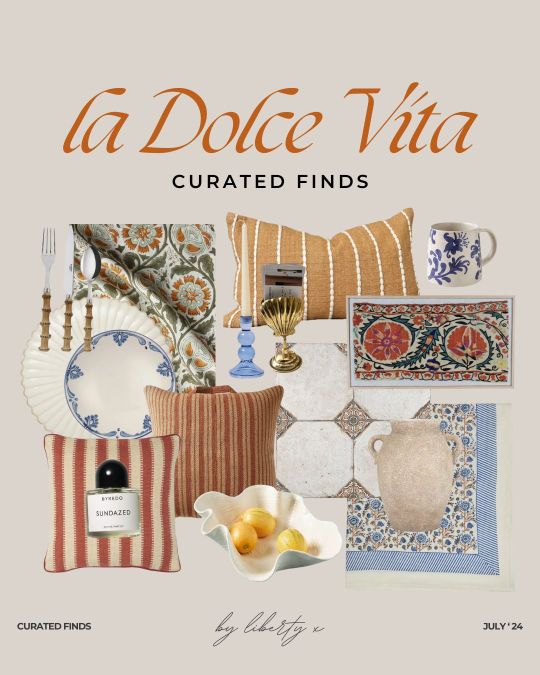
Hello! Enjoy a sneak peek of my curated selection of interior & lifestyle finds for the month of July, inspired by sun-kissed skin, ripe fruit and the essence of La Dolce Vita.
Follow me over on instagram @libertyhamerinteriors for shoppable links and monthly inspiration, I'd love to have you ❤️
Liberty x
11 notes
·
View notes
Text
The Science of Choosing the Right Dining Table for Your Family
The dining table is more than just a piece of furniture—it’s the heart of the home where meals are shared, conversations flow, and memories are made. But with so many options available, how do you choose the right one? Let’s break it down scientifically, considering size, shape, material, and functionality to find the perfect dining table for your family.
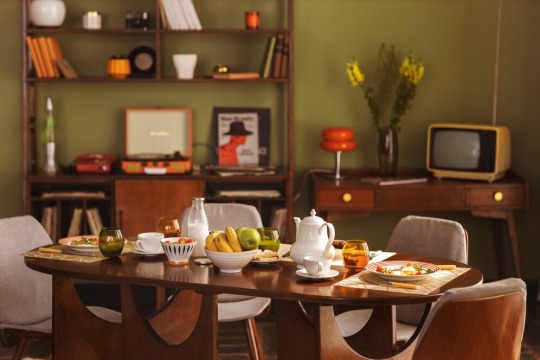
1. The Right Size: Proportion is Key
One of the biggest mistakes people make is choosing a table that’s too large or too small for their space. The key is to ensure proper clearance so people can move comfortably around it.
How to Calculate the Ideal Size:
📏 Leave at least 36 inches (3 feet) of space around the table for chairs and movement. 🪑 Each person needs about 24 inches of space to sit and eat comfortably. 🏡 For a small apartment? Consider an extendable or drop-leaf table that adapts to your needs.
🔹 Example Sizing Guide:
Small spaces (4-6 people): 48-60 inches long
Medium-sized dining rooms (6-8 people): 72-84 inches long
Large gatherings (8+ people): 96 inches or more
2. The Best Shape for Your Space
The shape of your dining table affects both aesthetics and functionality. Here’s how to choose wisely:
🔸 Rectangular Tables – The most common shape, great for larger families and spacious rooms. Ideal for 6+ people.
🔸 Round Tables – Perfect for smaller spaces and promotes better conversation. Great for 4-6 people.
🔸 Oval Tables – A softer version of rectangular tables, offering space efficiency with a bit more flow.
🔸 Square Tables – Best for intimate gatherings and small dining areas. Ideal for 2-4 people.
Science Tip: Studies show that round tables encourage better interaction, while rectangular tables provide a sense of structure and formality.
3. Choosing the Right Material: Durability vs. Aesthetics
Your dining table’s material affects both its durability and visual appeal. Let’s explore the best choices:
🌳 Solid Wood (Oak, Walnut, Mahogany) – Durable, classic, and long-lasting. Requires some maintenance but ages beautifully.
🛠 Engineered Wood (MDF, Plywood, Veneer) – Budget-friendly with a variety of finishes but less durable than solid wood.
🪵 Glass – Creates a modern, airy look, making small spaces feel larger. However, it requires frequent cleaning.
🛠 Metal & Industrial Materials (Steel, Aluminum, Concrete) – Ideal for modern or industrial homes, offering great durability but a colder aesthetic.
💡 Pro Tip: If you have young kids, avoid glass tables (fingerprints & breakability) and opt for rounded corners for safety.
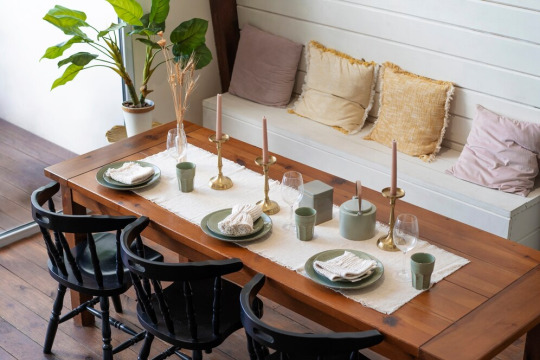
4. Functionality: More Than Just a Dining Table
A good dining table should adapt to your family’s lifestyle. Consider:
✅ Extendable Tables – Perfect for homes that host guests occasionally. ✅ Storage Tables – Some designs come with built-in drawers for cutlery or linens. ✅ Convertible Tables – Ideal for multi-use spaces (e.g., a dining table that doubles as a workspace).
Final Thoughts: Finding the Perfect Dining Table
Choosing the right dining table is both a science and an art. By considering size, shape, material, and functionality, you can find the perfect match for your home. Whether you're hosting big family dinners or enjoying quiet breakfasts, the right dining table will make every meal more enjoyable.
So, what’s your ideal dining table? Let us know in the comments! 🍽️✨
#dining table#Dining Table Guide#Interior Design#furniture#living room#home & lifestyle#Furniture Tips#Home Improvement#home decor#decor#home interior
2 notes
·
View notes
Text
The Sky Village Tourist Spot in Bir billing, Himachal Pradesh
The Sky Village is a stunning destination located in the beautiful hills of Himachal Pradesh, near Bir Billing. This unique village is known for its breathtaking views and peaceful atmosphere, making it an ideal spot for travelers looking for a serene getaway. Nestled among the clouds, The Sky Village offers a chance to connect with nature and experience the charm of local culture. For those interested in exploring, there are many offbeat places near The Sky Village that promise unforgettable adventures.

One must-visit spot nearby is the famous paragliding site in Bir, where visitors can soar through the sky and take in the magnificent landscapes below. It’s a thrilling experience that you won't want to miss! Another great location is the Tibetan Colony, which is rich in culture and features beautiful monasteries and delicious local food. These places to visit near The Sky Village allow you to experience the essence of the region while enjoying various activities, from sightseeing to tasting authentic Himachali dishes.
For those seeking more adventure, the trek to Rajgundha Valley is highly recommended. This trek takes you through lush forests and offers stunning views of the surrounding mountains. Along the way, you may encounter charming villages and friendly locals. After a day of exploring, returning to The Sky Village will provide a cozy place to relax and reflect on your adventures. With so much to see and do, your trip to The Sky Village will surely be a memorable experience!
#clearholidays#The Sky Village#places to visit near The Sky Village#The Sky Village tourism#The Sky Village travel guide#Himachal Pradesh#india#indian#travel#india travel#india tourism#incredible india#Bir billing#Bir billingtourism#inspirational quotes#inspiring quotes#interior design#interiors
3 notes
·
View notes
Text
The Best Materials for Custom Kitchen Cabinets in Toronto’s Climate
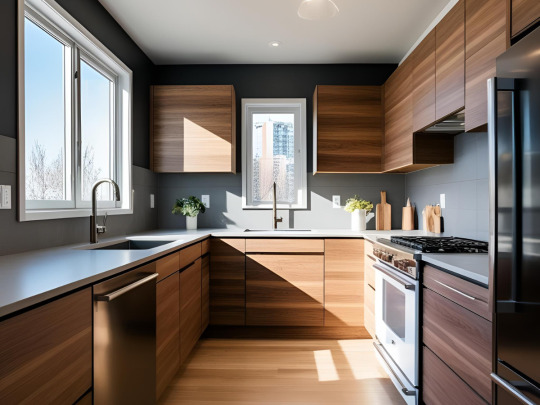
When it comes to custom kitchen cabinets, one size—or in this case, one material—definitely doesn't fit all. In a city like Toronto, where we experience everything from humid summers to bone-dry, frigid winters, the climate can have a serious impact on how your cabinetry performs and ages over time. Choosing the right materials for your custom kitchen cabinets isn’t just about style—it’s also about durability, stability, and long-term value.
If you're investing in a custom kitchen for your Toronto home, knowing what materials hold up best to the local conditions will help you make a smarter, longer-lasting choice. Here’s a breakdown of the top options worth considering.
1. Solid Wood: Timeless but Needs Care
Solid wood is a go-to choice for many homeowners thanks to its beauty and classic appeal. Woods like maple, oak, cherry, and birch are often used in custom kitchen cabinets for their strength and finish flexibility.
Pros:
Offers rich, natural texture
Can be stained or painted in a wide range of finishes
Extremely durable when well maintained
Climate Consideration: Wood is hygroscopic, meaning it absorbs and releases moisture based on humidity levels. In Toronto’s climate, this can cause warping or cracking if not properly sealed and maintained. A humidity-controlled kitchen or proper ventilation system can help mitigate this.
2. Plywood: A Strong, Stable Foundation
Plywood is widely used as a core material in custom cabinetry due to its resistance to warping and structural integrity.
Pros:
More moisture-resistant than solid wood
Less prone to expanding and contracting
Strong and long-lasting
Climate Consideration: Plywood’s layered construction gives it great dimensional stability—an important feature when battling Toronto’s humid summers and dry winters. Look for cabinetry that uses furniture-grade plywood for the best results.
3. MDF (Medium-Density Fibreboard): Smooth and Versatile
If you’re after a modern, sleek look with painted finishes, MDF is a material worth considering. It’s engineered from wood fibres and resins, resulting in a smooth surface that’s ideal for custom finishes.
Pros:
Perfect for painted cabinet doors and panels
Uniform texture—no wood grain to interrupt the finish
More affordable than solid wood
Climate Consideration: MDF is more stable than solid wood when it comes to expansion and contraction. However, it must be sealed properly to resist moisture, as it can swell if exposed to water. In Toronto kitchens where spills and steam are common, well-sealed MDF can perform beautifully when used strategically.
4. Thermofoil: Budget-Friendly and Low Maintenance
Thermofoil cabinets are made by applying a vinyl film over MDF. This material is known for being easy to clean and maintain, making it popular for families or high-traffic kitchens.
Pros:
Low maintenance
Smooth finish, often mimics wood or paint
Resistant to cracking and chipping
Climate Consideration: While thermofoil handles humidity well, it’s less tolerant to heat. Placing these cabinets too close to ovens or heat sources without protection can lead to peeling. In a well-designed Toronto kitchen with proper spacing, however, thermofoil can be a practical and stylish option.
5. High-Pressure Laminate: Durable and Stylish
Laminates have come a long way in terms of appearance and performance. High-pressure laminate (HPL) is particularly good for custom kitchens that need to stand up to a lot of wear and tear.
Pros:
Extremely durable
Available in a variety of textures and colours
Resists moisture, heat, and scratches
Climate Consideration: Thanks to its durability and resistance to climate fluctuations, HPL is an ideal choice for Toronto homeowners looking for longevity and low upkeep.
Choosing the Right Cabinet Finish for Toronto Kitchens
Beyond the cabinet material itself, the finish plays a big role in protecting your investment. A high-quality sealant or paint not only enhances the look of your cabinets but also serves as a barrier against moisture and temperature changes. In climates like Toronto’s, investing in finishes that can withstand seasonal shifts is just as important as the material underneath.
Blend Function with Local Insight
Choosing materials for custom kitchen cabinets in Toronto requires more than just a sense of style—it takes an understanding of how different materials respond to the local environment. From the rustic charm of solid wood to the modern durability of laminates, the right choice balances aesthetics, function, and weather resistance.
If you're ready to design a kitchen that stands the test of time and climate, Magna Custom Cabinetry and Design can help. With years of experience serving Toronto homeowners, they know what works—and what doesn’t—when it comes to custom cabinetry in our unique climate.
For expert advice and custom cabinetry that’s built to last, contact Magna Custom Cabinetry and Design at 416-727-9795. Learn more about custom kitchen cabinets in Toronto and how the right materials can make all the difference.
#custom kitchen cabinets#kitchen design toronto#toronto home renovation#kitchen renovation ideas#cabinet materials guide#modern kitchen cabinets#interior design toronto#toronto cabinetry#home improvement canada#magna custom cabinetry
1 note
·
View note
Text
john mulaney, françoise hardy, jonathan adler, and victoria de angelis are the four guardian angels that stand on the four corners of my bed to protect me while i sleep
#matthew mark luke and john my ASS#those bitches never did a thing for me!#a comedian a yé yé girl a ceramicist/ interior designer and a hot bassist on the other hand?#now THATS who’s been guiding me#john mulaney#françoise hardy#johnathan adler#victoria de angelis#they mean so much to me#musingz
10 notes
·
View notes
Text
Illuminate your space with a touch of magic!
Introducing the Floating Love Magnetic Suspension Bulb – where art meets technology!

Watch as this stunning bulb hovers and spins in mid-air, creating a mesmerizing focal point for any room.
Perfect for home decor, gifts, or just a unique conversation starter! Don’t miss out on the chance to own this enchanting piece.
Grab yours today and let your love for innovation shine!
#floating#gift#gift ideas#unique gifts#birthday gift#online shop#gift guide#gifts for men#gifts for women#smart gadgets#cool gadgets#new technology#smart living#best gifts#gift idea#gift inspo#gift inspiration#home decor#interiors#interior design#decor#home interior#livingroom#innovative technology#tech innovation#bedroom#bedroom decor#interior
2 notes
·
View notes
Text
Child-Friendly Décor Ideas for Australian Homes: A Guide to Daycare Interiors and Aussie Outdoor Blinds
Introduction Creating a child-friendly environment at home and in daycare centers is essential for promoting children’s well-being and fostering their development. One of the key aspects of child-friendly décor in Australian homes involves the integration of daycare interiors and outdoor blinds. This guide aims to provide insights and practical tips on designing daycare interiors and selecting…
#Australian homes#child-friendly decor#children&039;s room#daycare interiors#Guide#ideas#interior design#outdoor blinds#play areas
2 notes
·
View notes
Text
Fabrics 101: Informative Guide to Different Types of Materials
This post, it’s informative guide of fabric types, constructions and weights. Have you ever wondered what makes fabrics so different from each other? Why do some fabrics feel soft and cozy, while others feel crisp and cool? How do fabrics affect the way we dress, decorate, and express ourselves? Fabrics are the building blocks of the textile world, offering endless possibilities in fashion,…
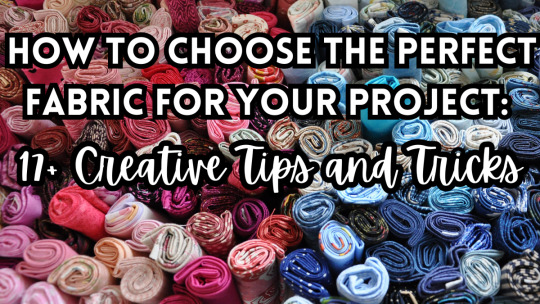
View On WordPress
#blended#fabric construction#fabric weight#fabrics#felted fabrics#gsm#guide#heavyweight fabrics#interior design#knit fabrics#lace fabrics#Lightweight Fabrics#materials#medium-weight fabrics#mesh fabrics#next generation materials#non-woven fabrics#oz/yd²#sewing#synthetic#textiles#ultra-heavyweight fabrics#woven fabrics
6 notes
·
View notes
Text
DIY: FURNITURE UPCYCLING
Hello everyone, how are you my DIY lovers who like to reuse their old things and do new things in their home.Today we’re going to delve into furniture upcycling where old repurposed pieces are given a second lease of life.All my mates grab your paint brushes and a little circus because we are going to turn trash into gold in one less and get ready to do as you did. Gold from Waste: Some Guidance…

View On WordPress
#Budget-Friendly#Creative Projects#diy#Eco-Friendly#Environmental Sustainability#Furniture Makeover#Furniture Restoration#Furniture Upcycling#Green Living#Home Decor#home improvement#Interior Design#recycling#Recycling Furniture#Repurposing Furniture#Step-by-Step Guide#Sustainable Living#Thrift Store Finds#Upcycled Home Decor#WOOD
2 notes
·
View notes
Text

Robyn Lea.
IG
Raw Edge Gallery
#home decor#home styling#interior design#interior styling#interior decor#decor#homewares#decoration#interiors#furniture#decorative#house#apartmentdecor#apartment#home furniture#home#home design#homestuck#interior#bedroom#slow living#life style#travel#city guide#lifestyle#cottage aesthetic#cottage#cottagecore#vintage#vintage decor
7 notes
·
View notes
Text
Transforming Your Rental: A Guide to Decorating with Freedom
Are you a renter who’s eager to make your apartment feel like home? You’re certainly not alone. Decorating a rental apartment can be both exciting and challenging, especially when you want to personalize your space without making permanent changes. Fortunately, there are rules of thumb that can help you navigate these challenges and turn your rental into a comfortable and stylish sanctuary that…

View On WordPress
#apartment aesthetics#apartment decor ideas#apartment design#apartment interior design#apartment living#apartment makeover#apartment organization#apartment style#budget-friendly decor#decorating challenges for renters#decorating tips#ikea#ikea home#ikea ph#ikea philippines#ikea shopping guide#making a rental feel like home#personalizing your space#rental apartment benefits#rental apartment decor#rental decorating challenges#rental design rules#rental-friendly decor#temporary decor#versatile furniture#well-designed rental
2 notes
·
View notes
Text

Change your home office space for more comfortable place! Natural sheepskins are perfect as a seat cover <3
#home decor#home & lifestyle#sweethomely#interior decorating#interior decor inspiration#home design#interior decor inspo#rustic home decor#scandinaviendesign#interior design#home office setup guide#home office#living room#family room#renovation#home office interior design#work from home
2 notes
·
View notes